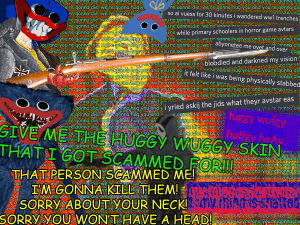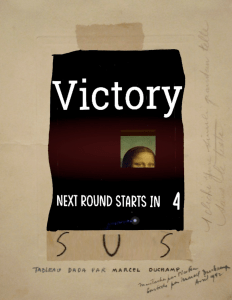In my intervention, I chose the game League of Legends to be the base and add my rule into it. It’s called zero-damage plan.
Details for what I do and the data:
https://docs.google.com/document/d/187eSSJCVMeX1Il2NOfoEyRbutEyVF16PmJ1oeM3U86U/edit?usp=sharing
Art statement:
When the first time I started to play League of Legends, I was taught to kill enemies as more as I can. Back to the begin, League of Legends is a MOBA game and the target is to destroy the enemies’ base. However, when I asked my brother why everyone’s just killing each other, he told me, everyone’s doing that. “You get killed if you don’t kill them”. That’s why I’m trying to find a way to win without dealing damage to the enemies. I played the game with my friends. I went to the top lane since the top lane players have got a tradition — split push. They stay in top lane trying to destroy the towers while the other four teammates group together for dragons and baron. It gives me the chance to win by dealing no damage.
The idea is actually from the Chinese history story that the country “Qi” assigned their army to attack “Wei”‘s capital so that they can rescue the country named “Zhao” who was attacked by “Wei”. I really admire how they can win the war without any fight. That’s what I want to do in my plan. Nowadays, people overtrust the power itself, but ignore the people who command the war. Even though I won’t hurt the enemies, I can limit the enemies’ action. They can’t ignore me when I’m destroying the towers. That’s why I want to try this plan to see if I can win without a fight.
So the basic idea is like, in the lane, I take as much damage as I can and ask my jungle to help me limit the enemy top to farm. (It will be better if we kill him). During the mid game, I keep split pushing, if someone comes to catch me, I escape. When this person goes back to the front lane, I go for push again. Like this, there will always be an enemy on his way to the front or to me. If the enemies don’t care about me, I can push and destroy the towers very fast. under this condition, we’ll easily win since the lane I do split push is really far from the baron or dragon the enemies want. At this time, my teammates are really important since they must win the 4v4 team fight or play for time in a 4v5 fight. The winning condition is for everyone doing their job without any wrong! I was like a military counsellor, sitting in the back and command everything in its correct way.
There’s a better solution that I asked the enemy top to be peace in the lane. If he/she agrees with me (I tried this before), we can easily farm and I can build items for push very fast. However, I was always refused or ignored so that I can only ask my jungle to Gank him/her.
More details are in my Google doc. I really love the idea. Although it’s hard to win, but really gives me feeling of achievement!












